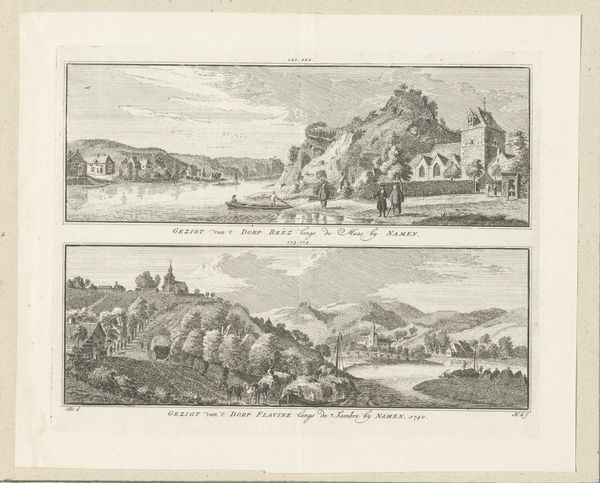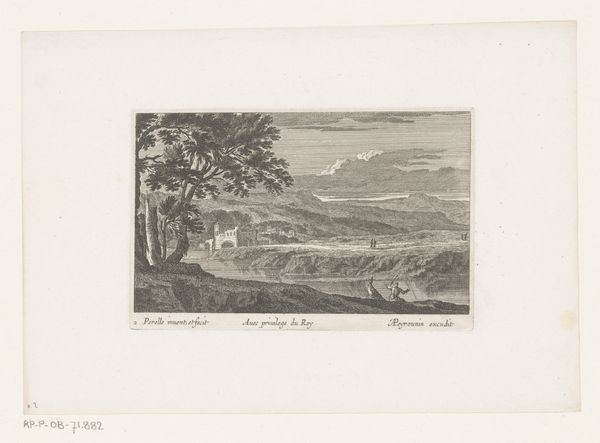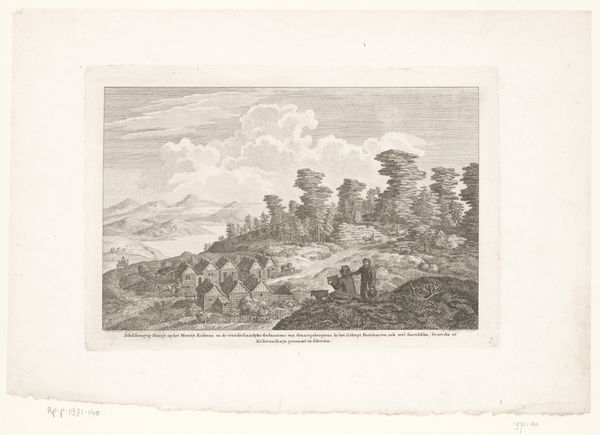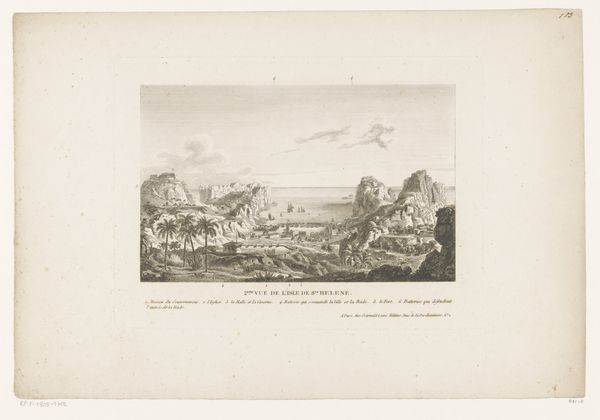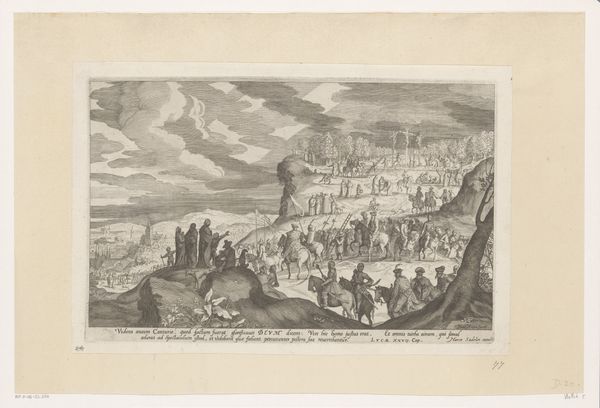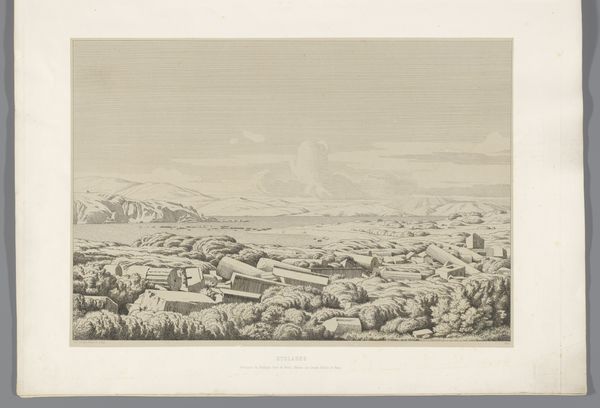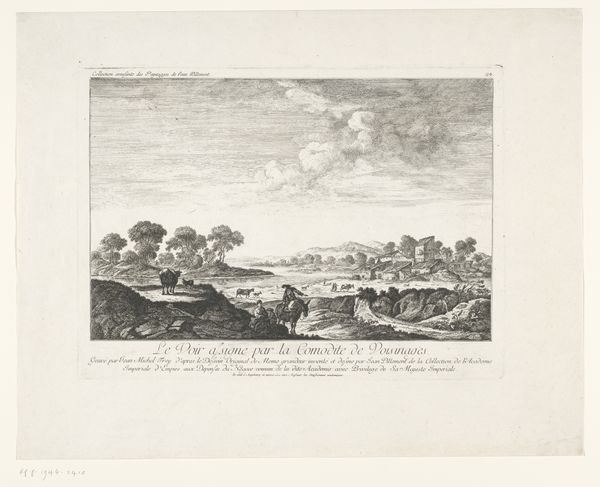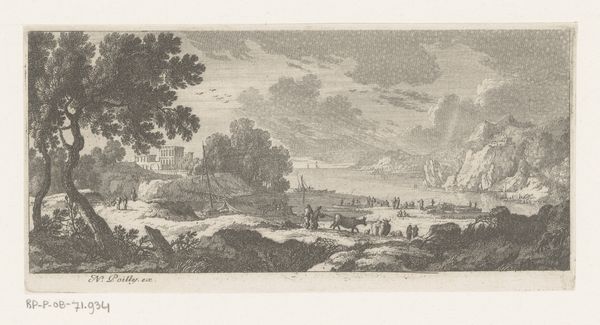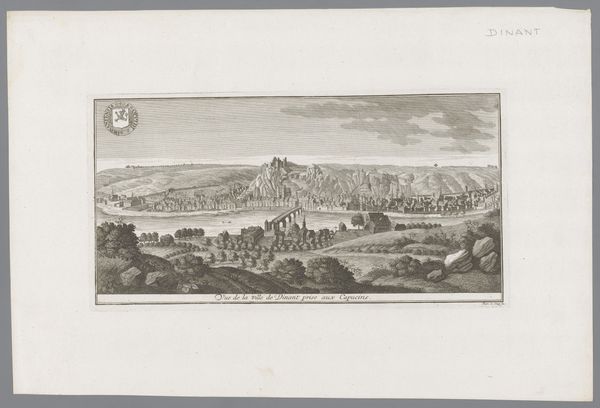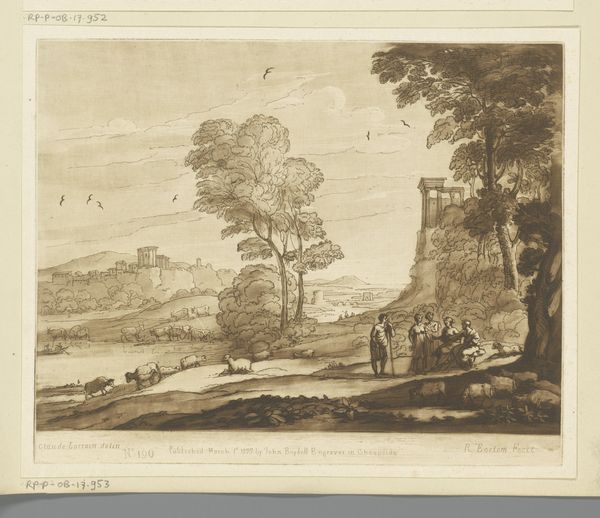
Gezicht op de Maas en de brug over de Maas bij Namen en gezicht op de stad Namen, 1740 1746 - 1792
0:00
0:00
hendrikspilman
Rijksmuseum
Dimensions: height 168 mm, width 223 mm
Copyright: Rijks Museum: Open Domain
Curator: This print, currently housed in the Rijksmuseum, gives us a double perspective of the city of Namur. Etched by Hendrik Spilman sometime between 1746 and 1792, it presents both a "Gezicht op de Maas en de brug over de Maas bij Namen" and a closer look at the city itself. Editor: Immediately, I get this feeling of cool detachment from these twin images. It’s like viewing Namur through someone's very precise, eighteenth-century lens—clinical even. The detail is stunning, though; it's amazing how much he conveys with simple lines. Curator: Absolutely. Spilman's expertise with engraving is evident here, especially in the precision and detail afforded in rendering architectural and topographical elements. You might even find his perspective, in its methodical presentation, objective. Notice how the upper image prioritizes the river and its bridge, almost like it is cutting the settlement in two! The human figures serve primarily to direct the eye towards the background elements rather than as focal figures in their own right. Editor: The light feels very even too, adding to the lack of drama. No shadows play tricks, no expressive skies, no sense of really *being* there. Though there’s a certain charm to that distance, like studying a meticulously drawn map or an architectural diagram. How about this sense of division from having two images—two perspectives? Curator: That division could also speak to how Spilman invites us, in our present moment, to examine themes of civic pride and technological innovation in 18th-century urban spaces. The views position us in the present of the Enlightenment—even in light of its future social ruptures that, after all, took place within Namur's fortifications. Spilman’s city of Namur embodies the ideals of his time. What do you think? Editor: I do agree. It almost invites us to find warmth in its visual and formal distance. It demands closer consideration to really understand. Curator: Precisely. A city presented from a specific intellectual standpoint, rather than felt—a feeling of urban order in print.
Comments
No comments
Be the first to comment and join the conversation on the ultimate creative platform.
